Measured at 25°C unless otherwise specified
Measured at 25°C unless otherwise specified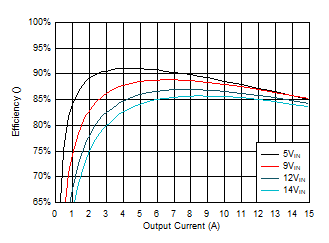
| VOUT
= 1 V |
fSW
= 1 MHz, FCCM |
Figure 6-1 Efficiency vs Output Current. Measured at 25°C unless otherwise specified 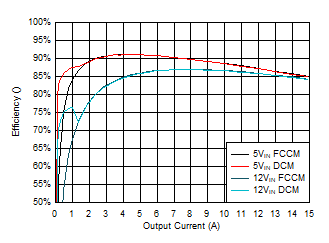
| VOUT
= 1 V |
fSW
= 1 MHz, DCM versus FCCM |
Figure 6-3 Efficiency vs Output Current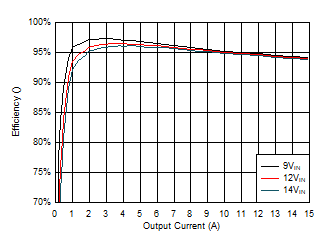
| VOUT
= 5 V |
fSW
= 400 kHz, FCCM |
Figure 6-5 Efficiency vs Output Current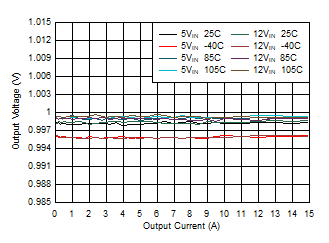
| VOUT =
1 V |
fSW =
1 MHz, FCCM |
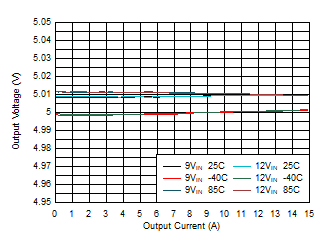
| VIN = 12 V | VOUT = 5 V | fSW = 400 KHz, FCCM |
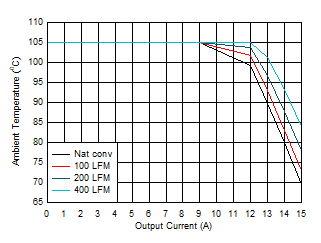
| VIN = 12 V | VOUT = 5 V | fSW = 600 kHz |
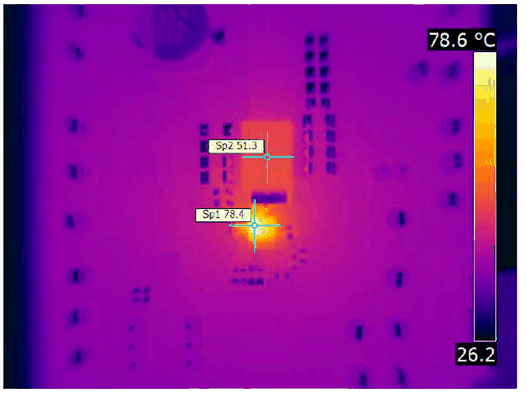
| VIN
= 12 V |
VOUT
= 1 V |
fSW
= 1 MHz |
Figure 6-13 Thermal Image at 15-A Output Current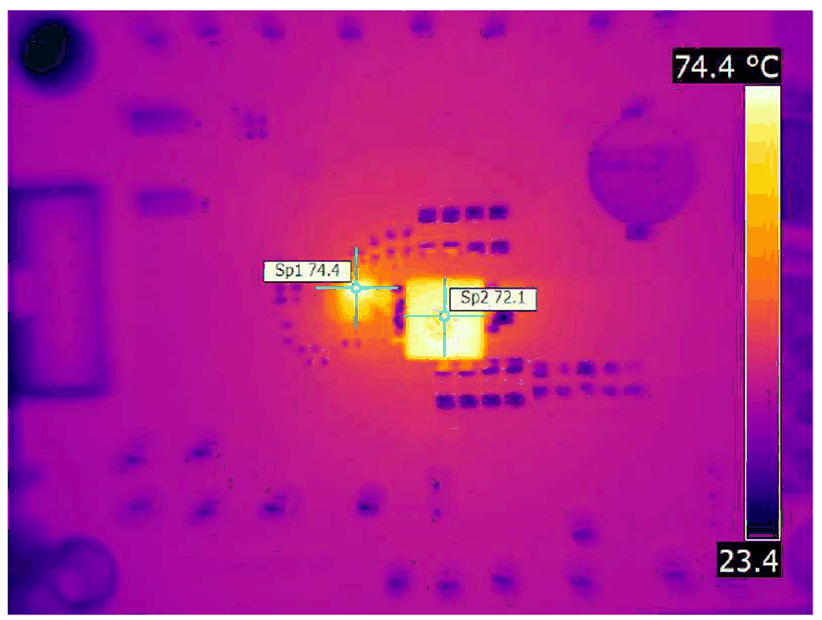
| VIN
= 12 V |
VOUT
= 5 V |
fSW
= 0.6 MHz |
Figure 6-15 Thermal Image at 12-A Output Current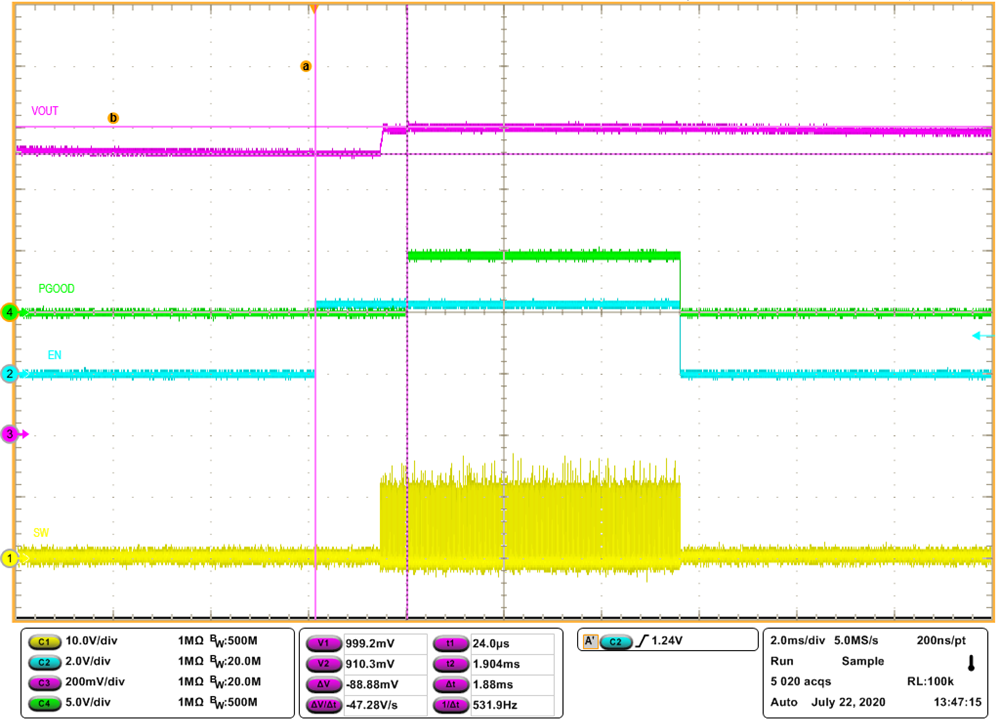
| VIN
= 12 V |
VOUT
= 1 V |
fSW
= 1.0 MHz BOM |
Figure 6-17 90%
Pre-biased Start-up by EN at 0-A Output Current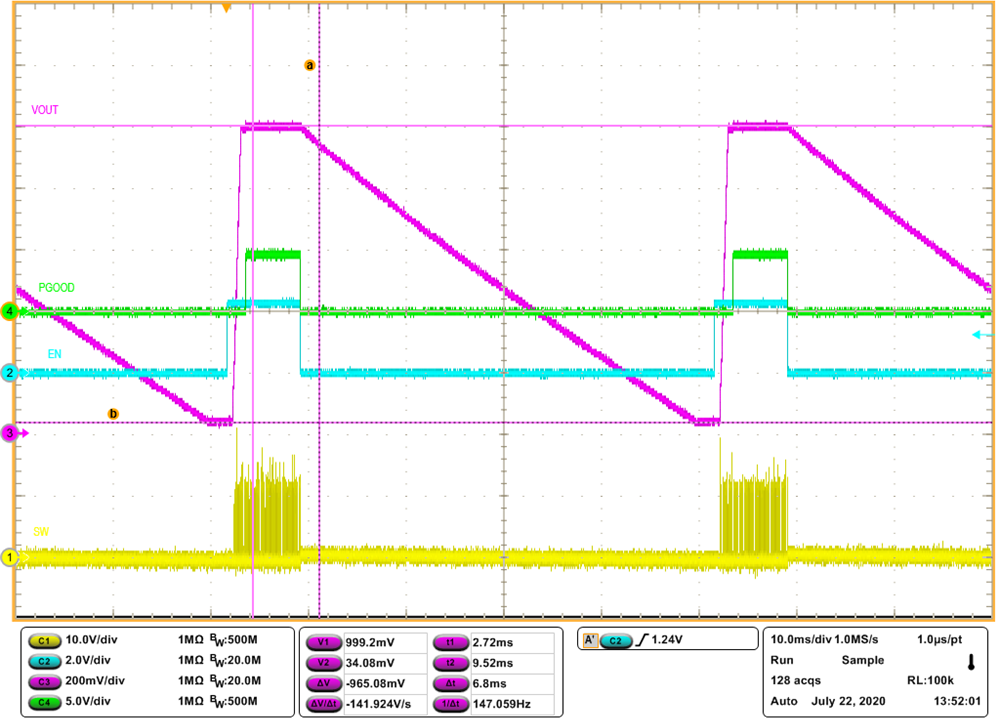
| VIN
= 12 V |
VOUT
= 1 V |
fSW
= 1.0 MHz BOM |
Figure 6-19
Start-up and Shutdown by EN at 0-A Output Current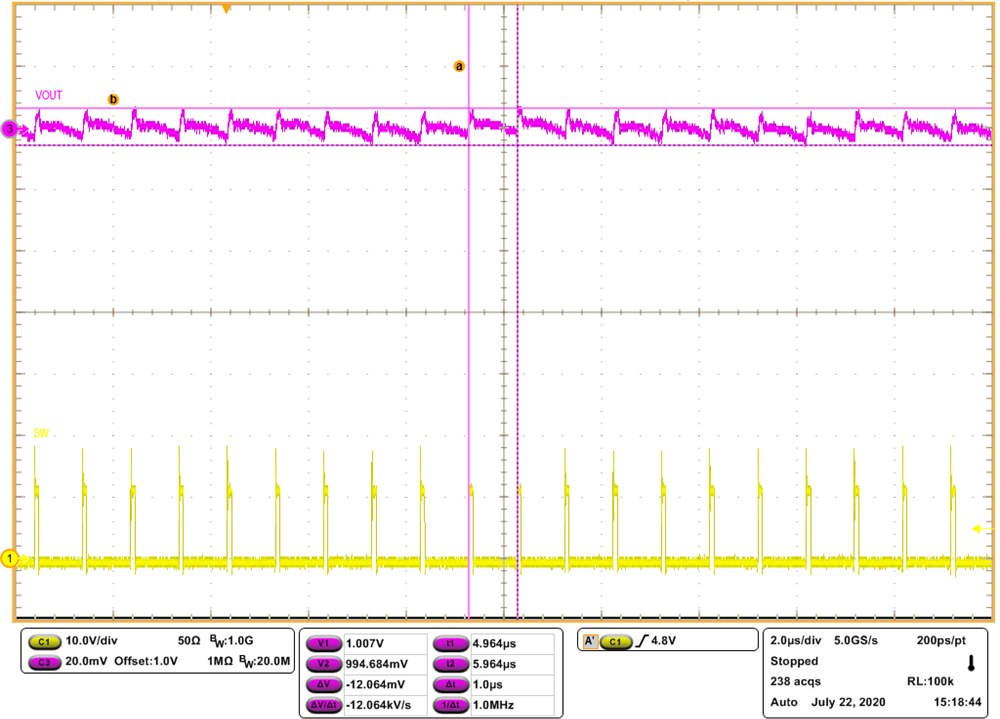
| VIN
= 12 V |
VOUT
= 1 V |
fSW
= 1.0 MHz BOM |
Figure 6-21
Steady State at 10-A Output Current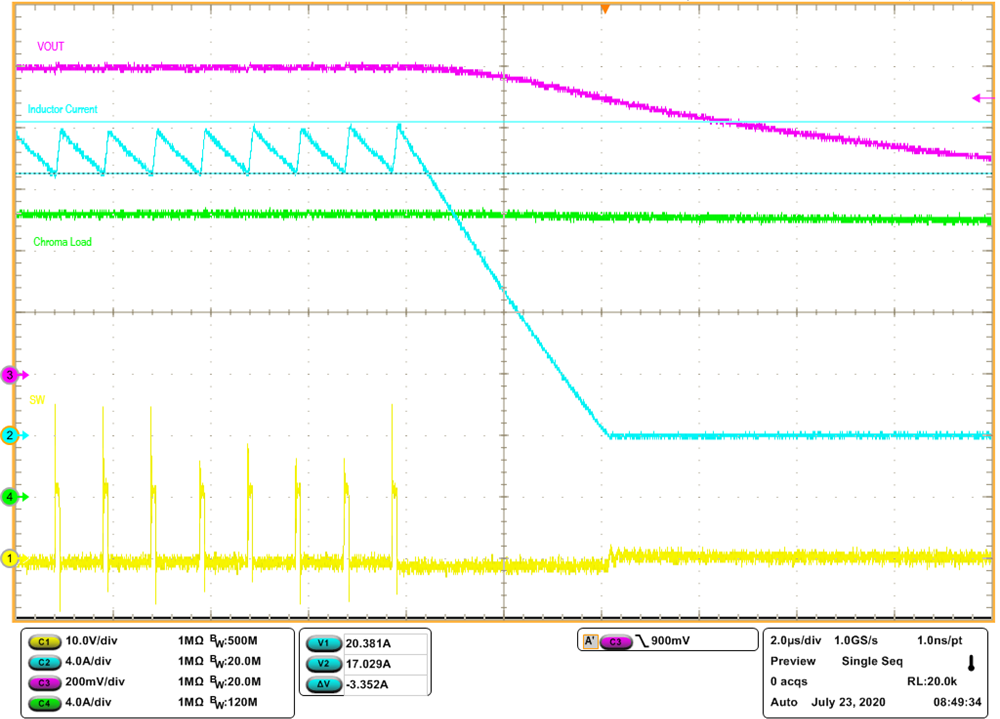
| VIN =
12 V |
VOUT
= 1 V |
fSW =
1.0 MHz BOM |
Figure 6-23 20-A
Overcurrent Protection by Electronic Load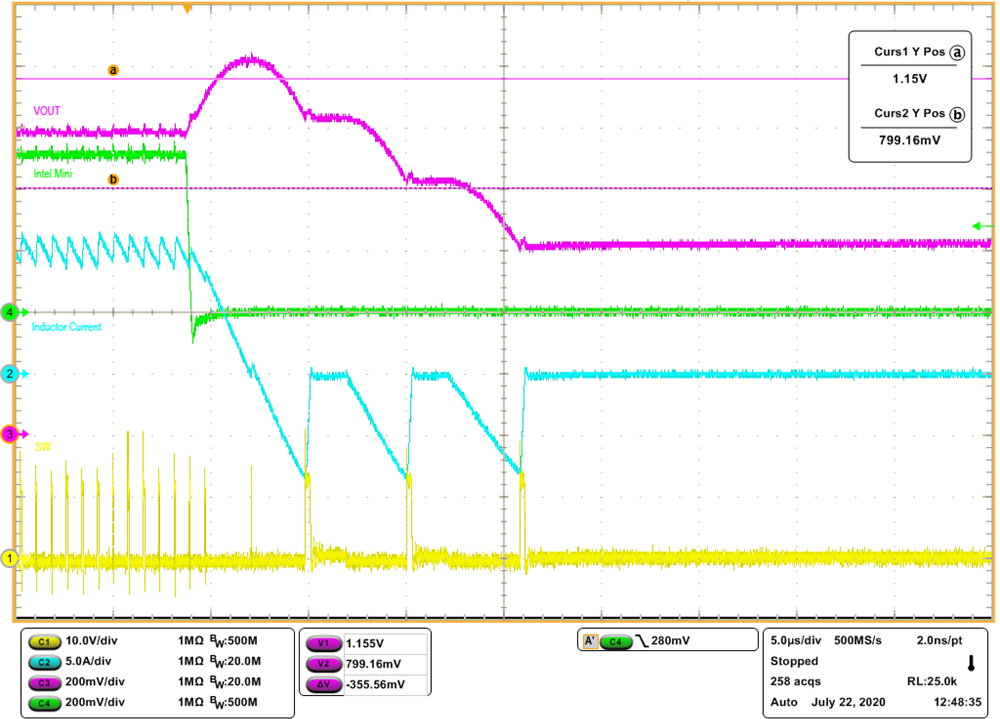
| VIN =
12 V |
VOUT
= 1 V |
fSW =
1.2 MHz BOM |
Figure 6-25
Overvoltage Protection, Negative OCP, then Undervoltage Protection by Load
Stepdown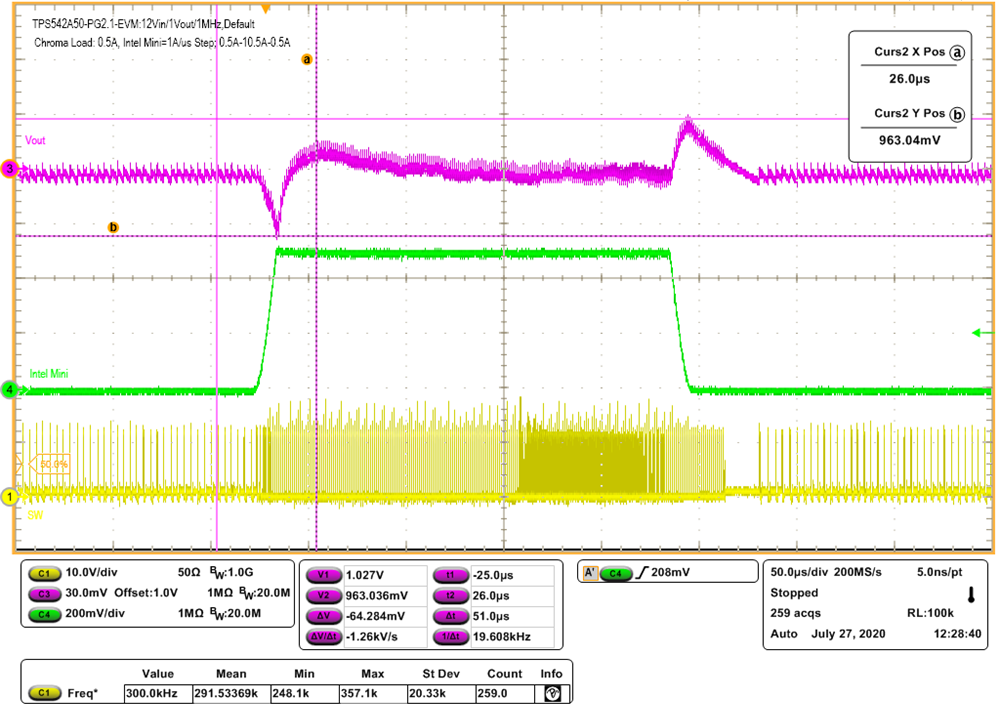
|
VIN
= 12 V |
VOUT
= 1 V |
fSW
= 1.0 MHz BOM |
|
Figure 6-27 Load
Transient in DCM to FCM 0.5 A to 10.5 A to 0.5 A at 1 A/μs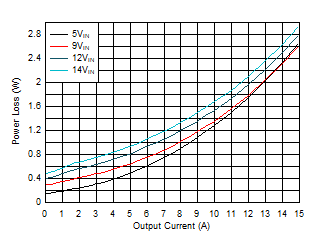
| VOUT
= 1 V |
fSW
= 1 MHz, FCCM |
Figure 6-2 Power
Loss vs Output Current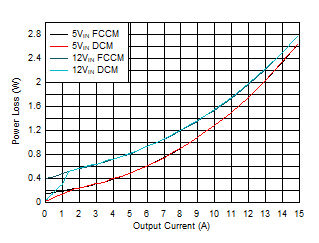
| VOUT
= 1 V |
fSW
= 1 MHz, DCM versus FCCM |
Figure 6-4 Power
Loss vs Output Current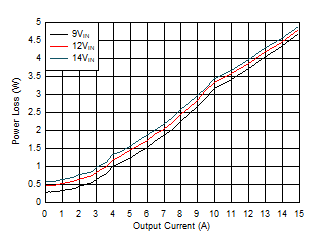
| VOUT
= 5 V |
fSW
= 400 kHz, FCCM |
Figure 6-6 Power
Loss vs Output Current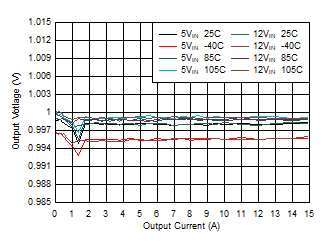
| VOUT =
1 V |
fSW =
1 MHz, DCM |
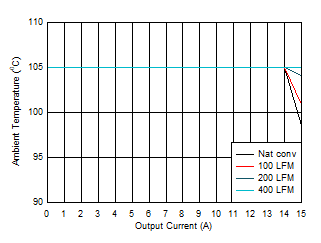
| VIN = 12 V | VOUT = 1 V | fSW = 1 MHz |
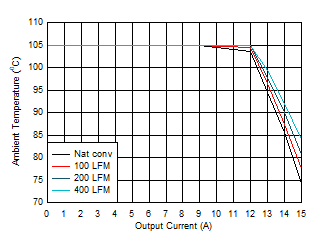
| VIN = 5.5 V | VOUT = 1 V | fSW = 2.2 MHz |
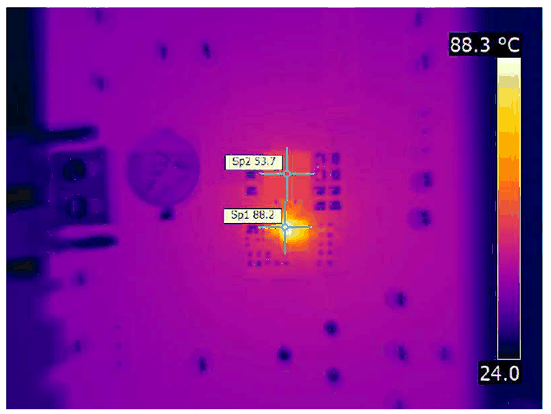
| VIN
= 5.5 V |
VOUT
= 1 V |
fSW
= 2.2 MHz |
Figure 6-14 Thermal Image at 14-A Output Current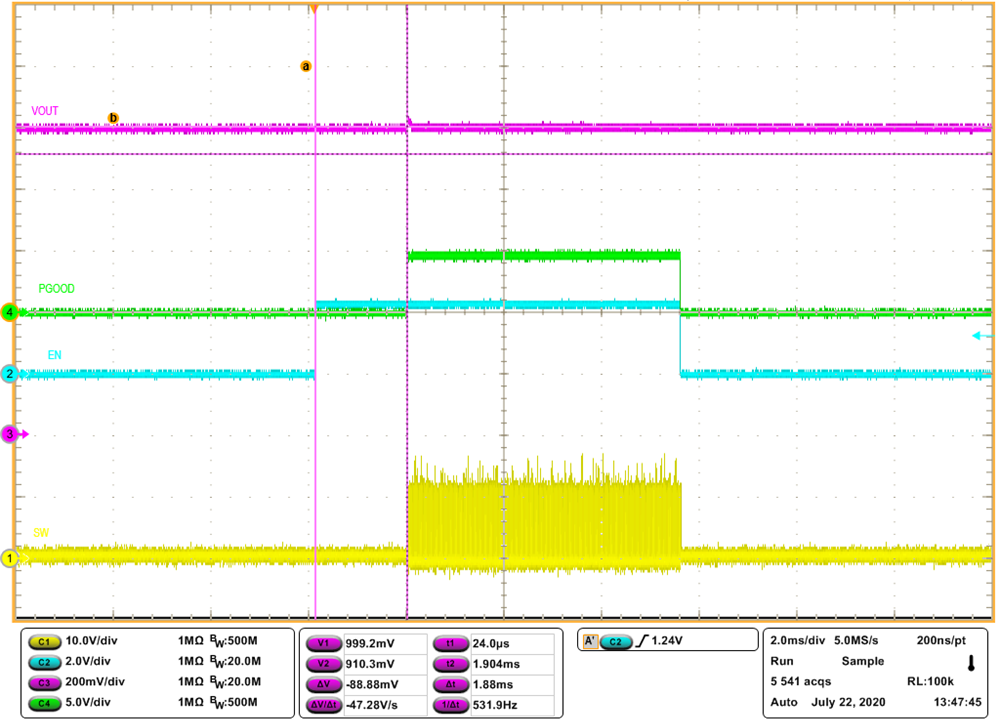
| VIN
= 12 V |
VOUT
= 1 V |
fSW
= 1.0 MHz BOM |
Figure 6-16 100%
Pre-biased Start-up by EN at 0-A Output Current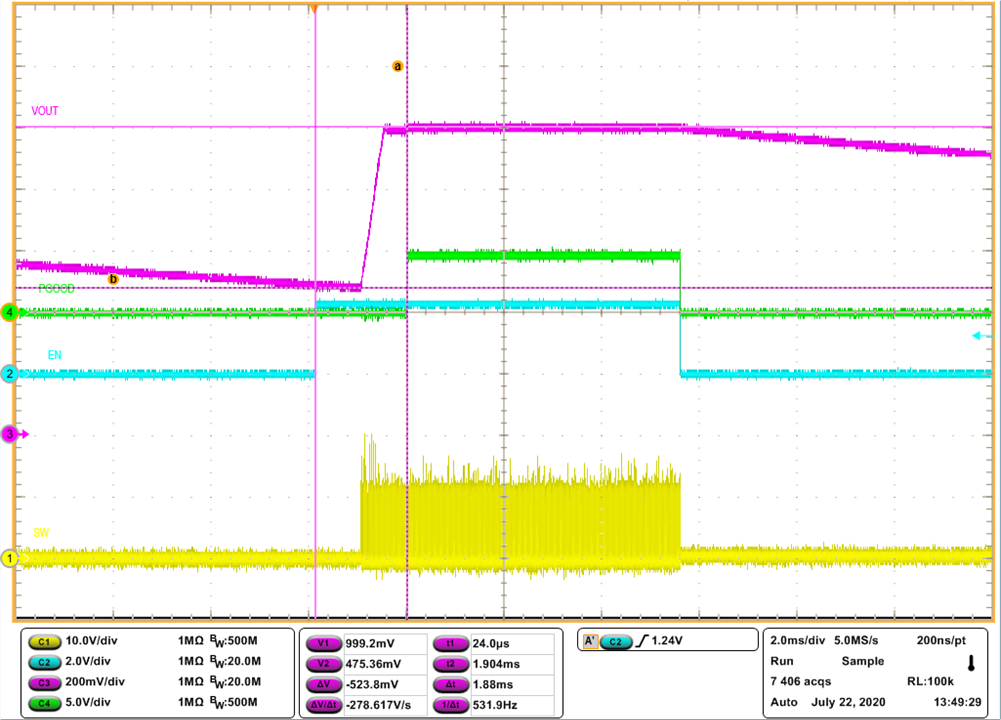
| VIN
= 12 V |
VOUT
= 1 V |
fSW
= 1.0 MHz BOM |
Figure 6-18 50%
Pre-biased Start-up by EN at 0-A Output Current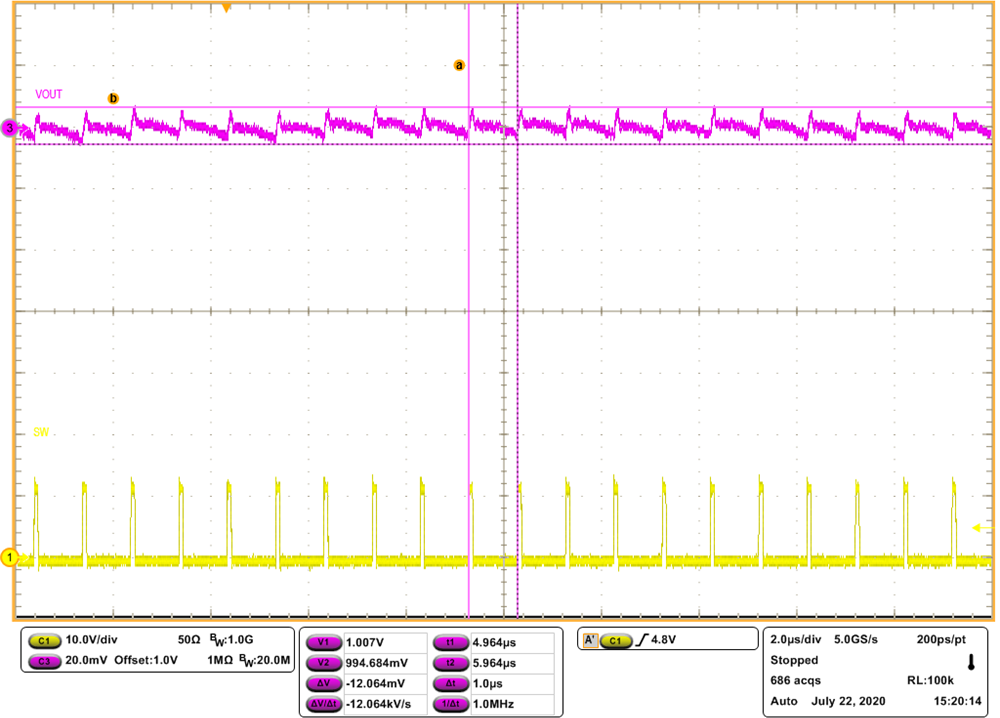
| VIN
= 12 V |
VOUT
= 1 V |
fSW
= 1.0 MHz BOM |
Figure 6-20
Steady State at 0-A Output Current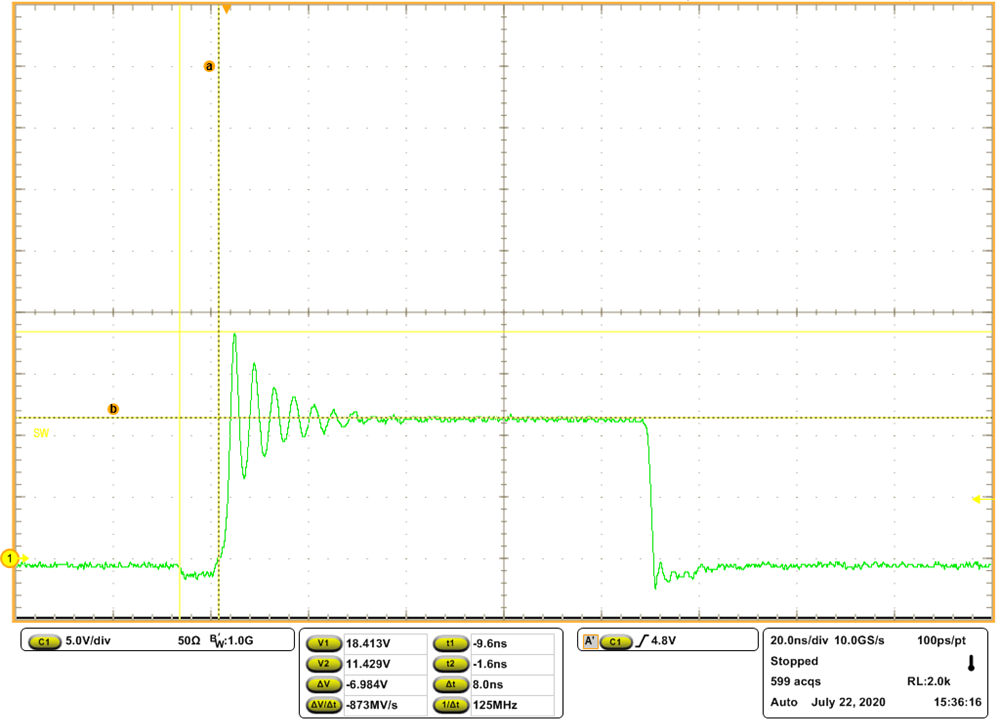
| VIN =
12 V |
VOUT
= 1 V |
fSW =
1.0 MHz BOM |
Figure 6-22
Switch Node Ringing and Dead-Time at 10-A Output Current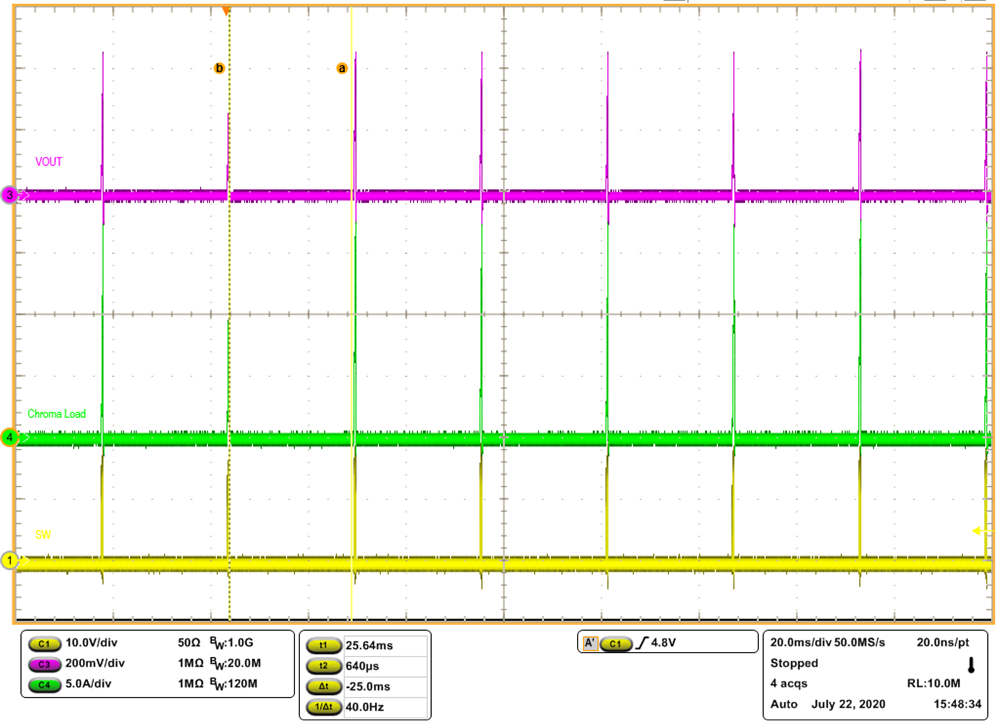
| VIN =
12 V |
VOUT
= 1 V |
fSW =
1.0 MHz BOM |
Figure 6-24
Short Overcurrent Protection Hiccup by Electronic Load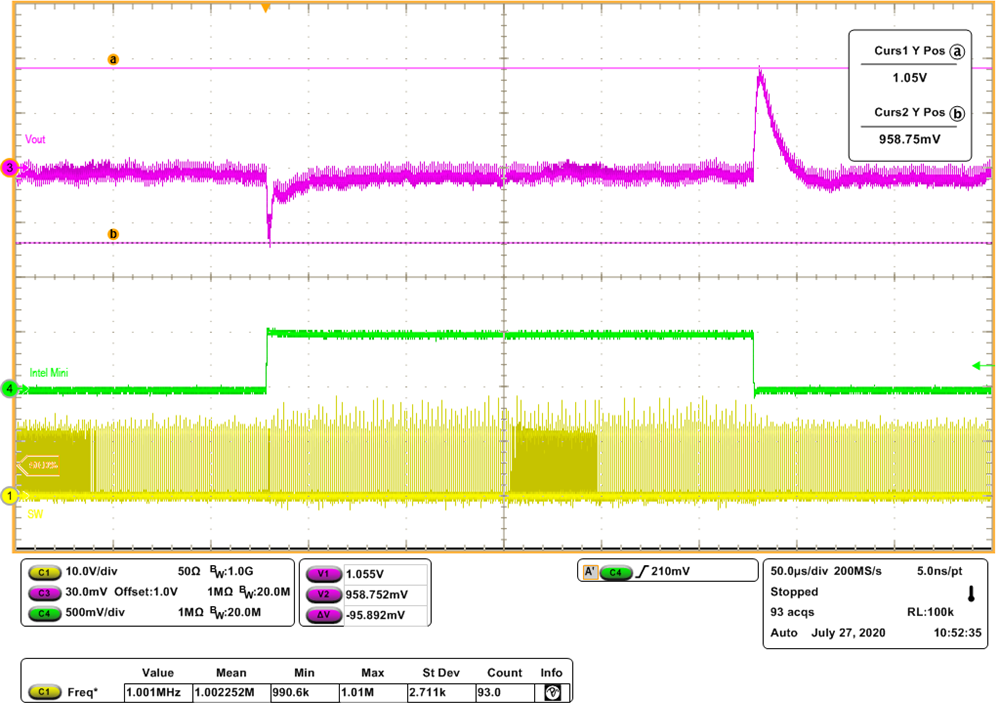
| VIN =
12 V |
VOUT
= 1 V |
fSW =
1.0 MHz BOM |
Figure 6-26 Load
Transient 2 A to 12 A to 2 A at 20 A/μs


























